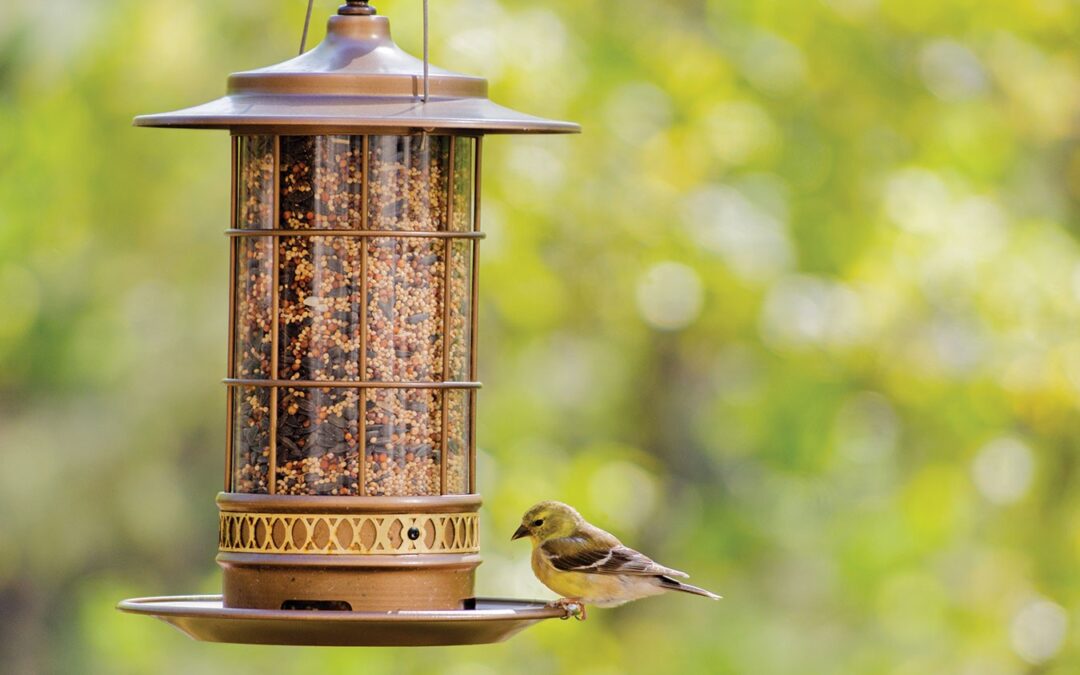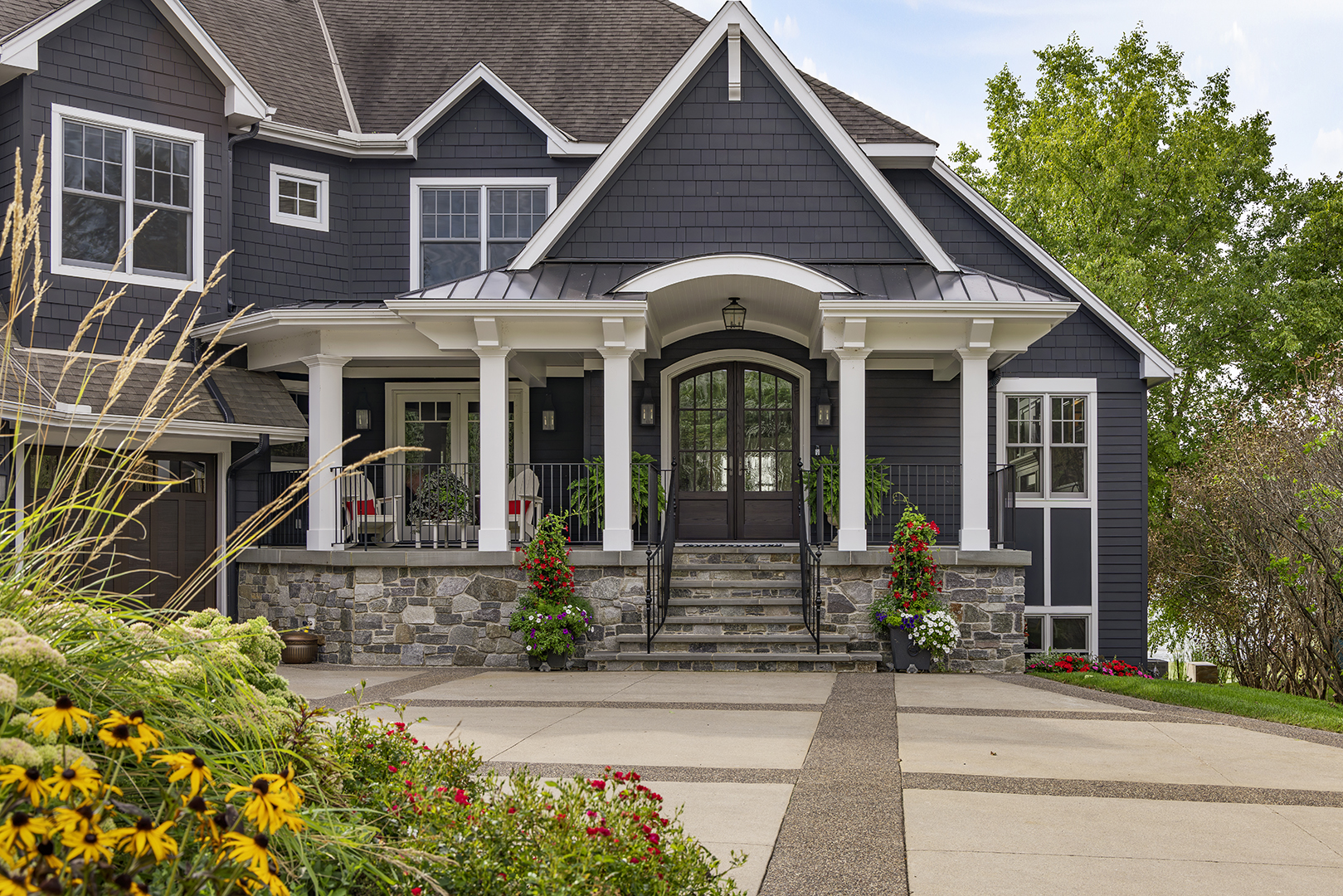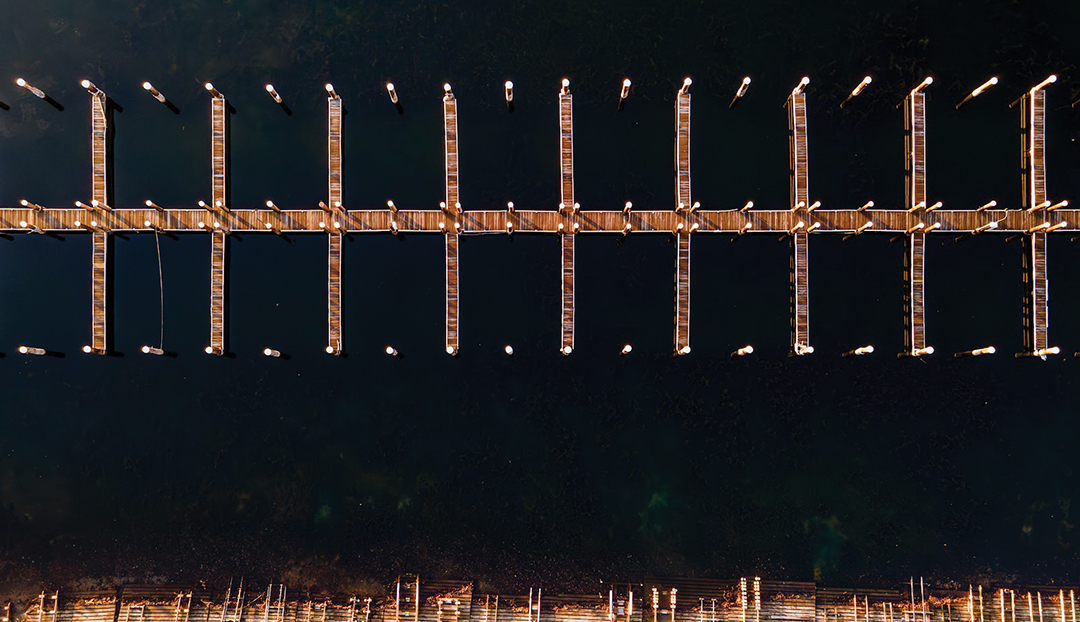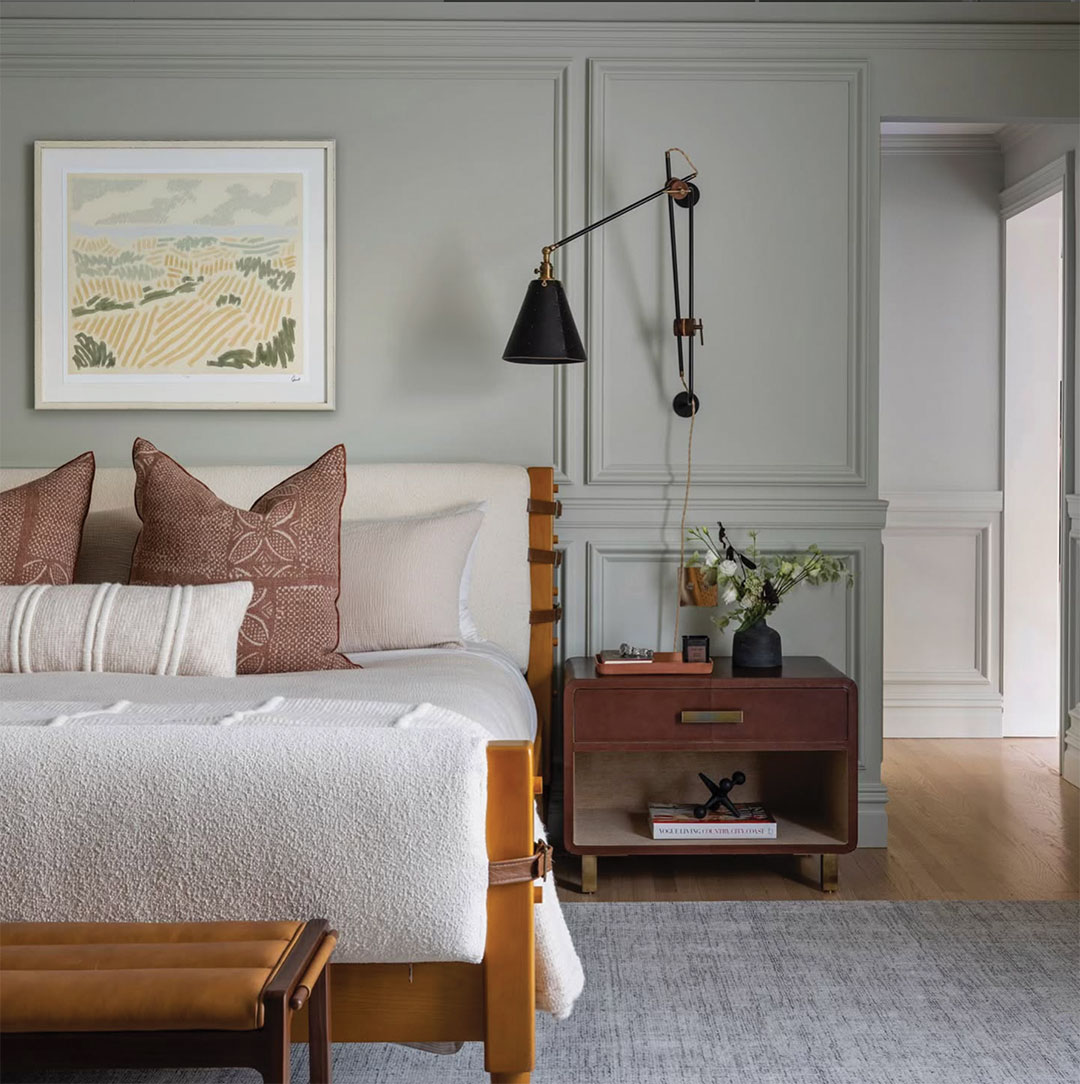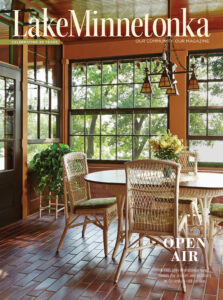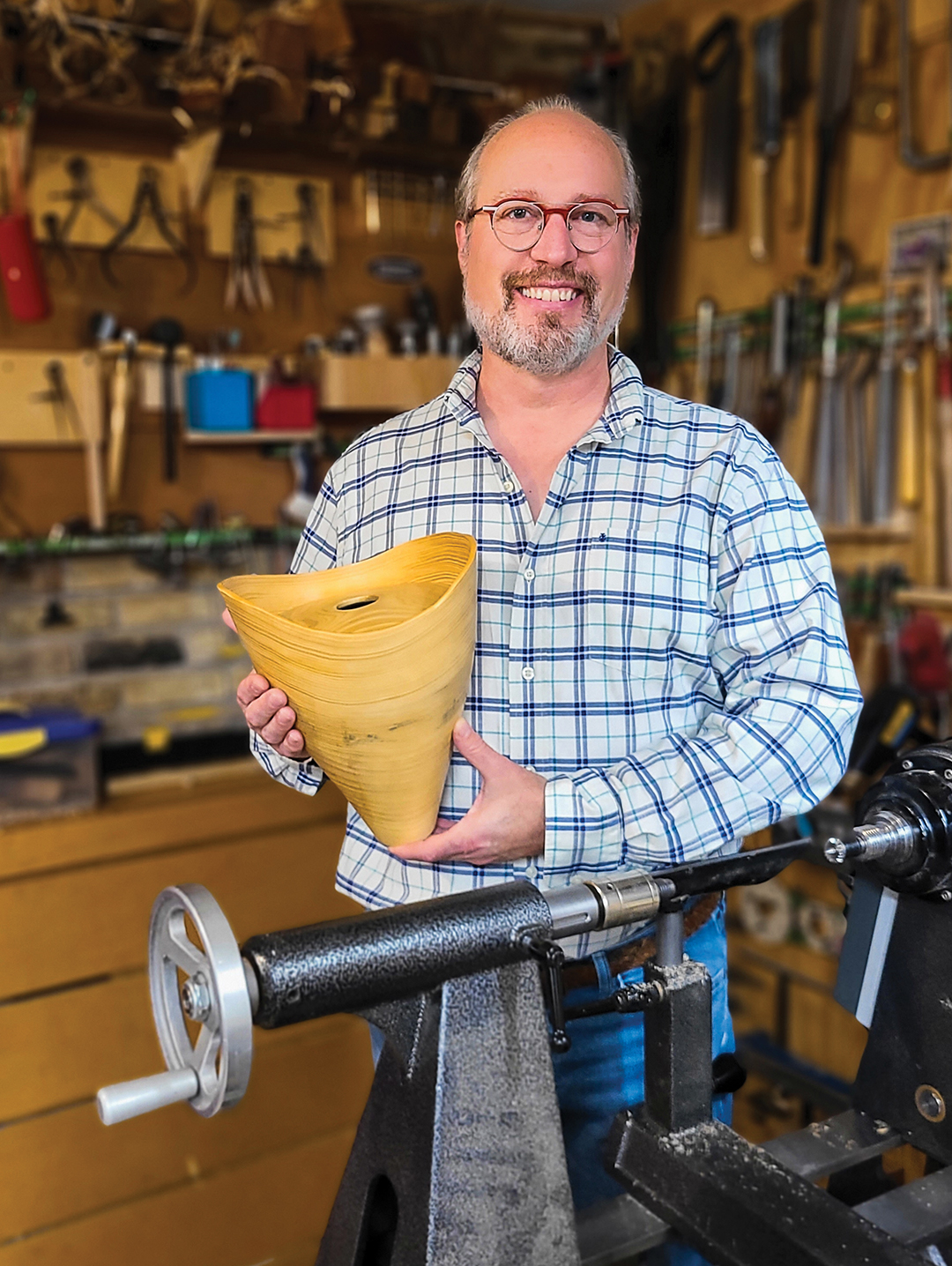
Bob in his shop, holding a natural edge Concolor Fir vessel. Photos: Robert Clague
Minnetonka resident transforms Minnesota hardwoods into solid art.
For Robert Clague, every piece of wood is an intriguing mystery just waiting to be revealed.
The Minnetonka woodturner and artist describes himself as a “maker of vessels.” His collection of pieces includes wooden bowls, boxes, vases and Christmas ornaments along with an assortment of abstract artistic pieces.
And while Clague will be the first to acknowledge that sometimes a bowl is just a bowl, many of his pieces are a reflection of what is not only inside a tree, but what resides within the artist himself. “It all starts with a piece of wood and being curious about it,” he says.
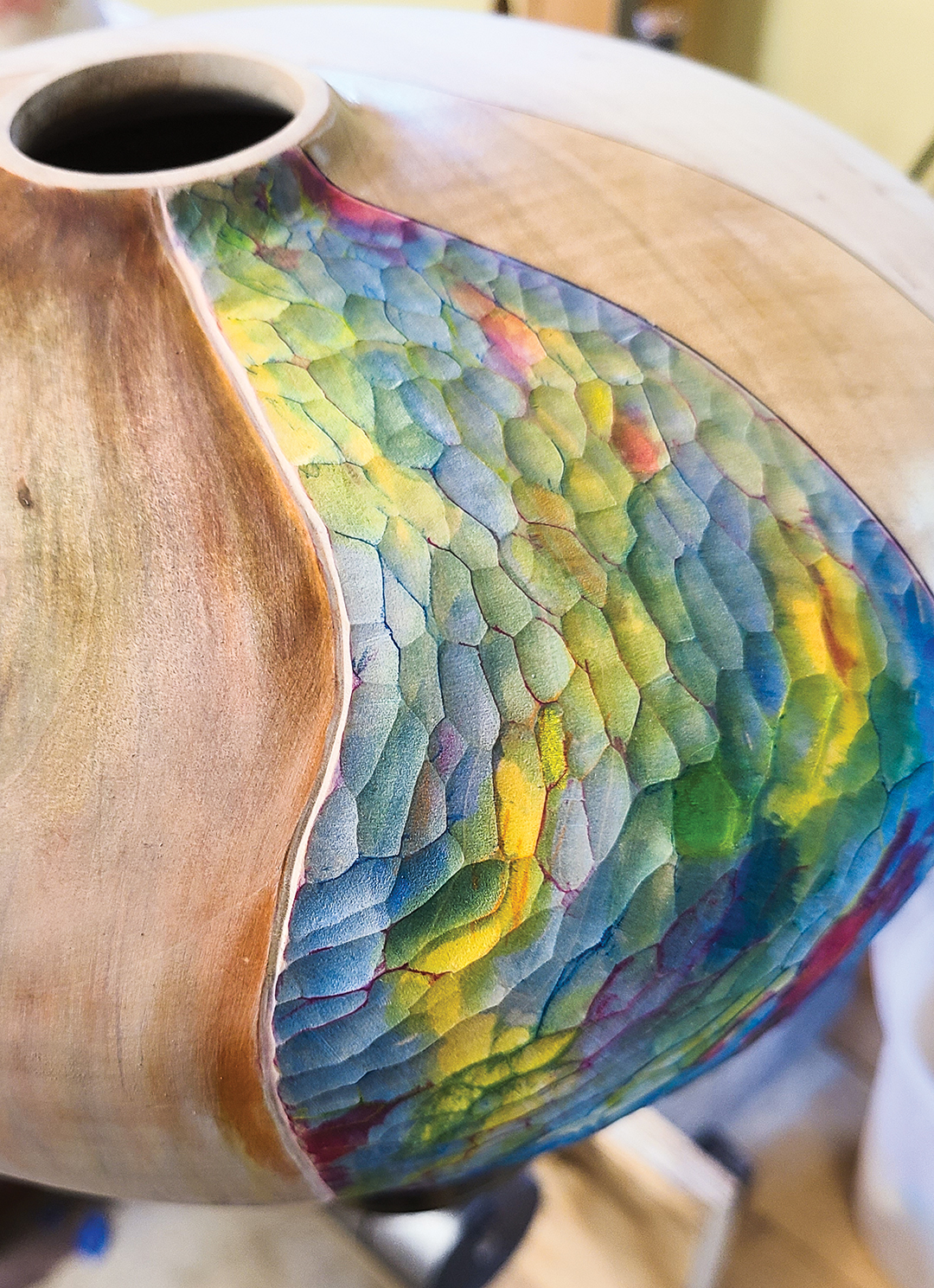
Detail of work in progress: “Story of Identity”
Clague has been a wood hobbyist for the last 35 years, but it wasn’t until he left a career in IT to be a stay-at-home dad that he got his hands on a lathe. Though he had not delved into woodturning before, the process intrigued him. “I made a few good cuts, sent some shavings flying and I was hooked,” he says.
Today, Clague has made the transition from hobbyist to artist. He sells his pieces online via his website, at select craft shows and at Local World Gallery in Wabasha, Minnesota. He also accepts commissions and is especially fond of turning trees, which have special meaning, into artistic pieces. “There’s tremendous beauty inside our trees,” he says. “I love revealing that.”
Clague says that almost any tree or wood can be turned. He generally starts with a log and cuts it up into large chunks with a chainsaw. During those cuts, he will decide on form and grain orientation. “There’s a lot of standing and staring at logs,” he says. Clague then refines the shape with a band saw. At that point, the wood is mounted on the lathe and goes through a rough turn. After a second turn, the wood is coated with wax and allowed to dry.
Clague says that the drying process can take from six months to a year. Once dry, the wood is loaded back onto the lathe where it will get its final, exact shape. He then sands and finishes the piece, and, in some cases, will add texture or color to the piece.

Spalted silver maple “Map” vessel.
Sometimes, Clague will be well into the process before he knows just what he’s making. “I love the revealing of the subconscious,” he says. “The wood is always offering something. We don’t always want it.”
Most of the wood Clague works with comes from the street he lives on, so the majority of his pieces are native Minnesota hardwoods. “There’s always a story—at the very least about the tree and how I came to have it,” he says.
Clague is especially fond of working with cherry for its scent and box elder for its tendency to produce dramatic colors. He says, at any given time, he has 40–100 finished pieces with another 300-plus drying, more if he has a show coming up. “If I’m not creating, I get very unhappy,” Clague says. “I’m very lucky to be a creative person.”
Prairie Dust
Clague produces a large volume of shavings and sawdust while creating his pieces. What does he do with it? He says he gives it to two friends, who live off-grid near Winona and have created a very large and successful prairie restoration. They use the shavings in a variety of ways that become part of the prairie. “This makes many beings happy,” Clague says.
Robert Clague Woodturning
Facebook: Robert Clague Woodturning
Instagram: @claguewood


